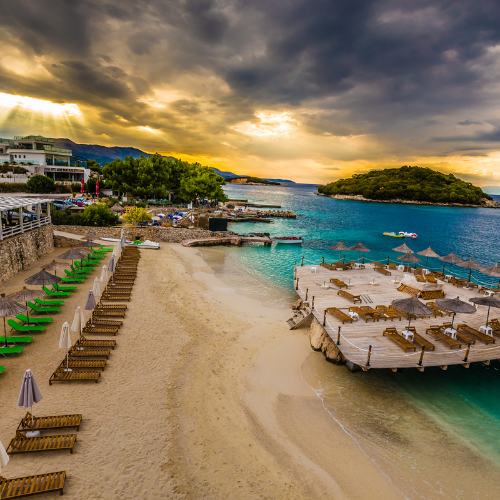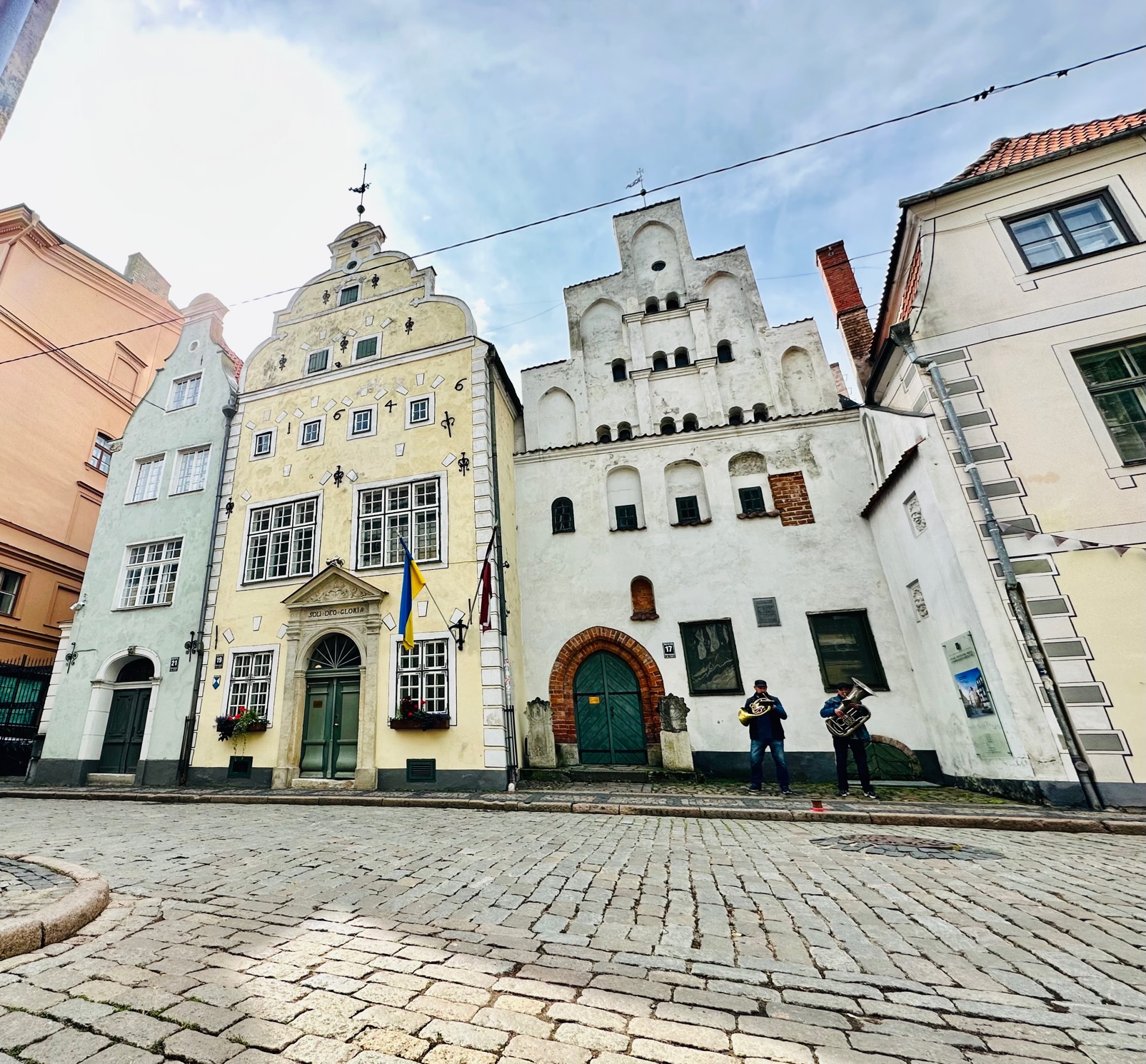When it comes to visiting the Amalfi Coast, there are many options of places to stay, see and what to do. Let’s dive in! For the purposes of this article, we are including Naples, Sorrento, and Pompeii as well! Check out our Amalfi Itineraries and tips for visiting the Amalfi Coast with kids.
Best Time to Visit the Amalfi Coast
There is no “bad” time to visit the Amalfi Coast, it just depends on what is most important to you.
Spring (April to June): Spring is part of the “shoulder season” meaning it is not peak but rather just before the busiest season (summer).
- Weather: Spring is considered one of the best times to visit. The weather is mild, with temperatures ranging from the low 60s to high 70s Fahrenheit (15-25°C). The coast is lush and green, and flowers are in full bloom.
- Crowds: It’s not as crowded as the summer months, making it a great time to explore the towns and attractions without huge crowds.
- Activities: Hiking and outdoor activities are enjoyable during this season.
Summer (July to August): This is the busiest and most crowded season and therefore has the highest prices.
- Weather: Summer is the peak tourist season with hot and sunny weather. Temperatures can soar above 80°F (27°C) and sometimes even higher.
- Crowds: The Amalfi Coast is extremely crowded during the summer, especially in July and August. Expect long lines, higher prices, and difficulty finding accommodations.
- Activities: It’s perfect for beachgoers and water activities. The sea is warm and inviting.
Early Fall (September to October): This is the other “shoulder season” meaning it is less crowded than summer but still a wonderful time to visit.
- Weather: September is a fantastic time to visit as the weather remains warm and pleasant, and crowds start to thin out. October is also a good option, but it can be slightly cooler and rainier.
- Crowds: Crowds decrease compared to the summer peak, but it’s still a popular time to visit.
- Activities: Hiking, sightseeing, and enjoying outdoor activities are excellent options.
Winter (December to March): This is the least busy season and therefore usually has lowest prices.
- Weather: Winter is the off-season with cooler and wetter weather. Temperatures can drop to the 40s and 50s°F (5-15°C).
- Crowds: The Amalfi Coast is quiet during the winter months, and many businesses close or have reduced hours.
- Activities: While it’s not the best time for outdoor activities, you can explore the town
- s, enjoy local cuisine, and experience a more authentic, less touristy side of the coast.
Where to Stay in Amalfi Coast
There are 2 schools of thought on visiting the Amalfi coast: one is to pick a “home base” and visit places from there. The other, is to move around and stay a couple of nights in each place.
Best home bases for Amalfi Coast if you choose to stay in just one place and want to visit many other places would be:
- Sorrento, as it has easy access to ferries, taxis, trains, and public transit. You can take a ferry from Sorrento to Capri, Naples, Amalfi, Positano, Salerno, Maiori, and more (seasonally). Trains also leave from Sorrento to Pompeii, Herculaneum, Naples, and Mount Vesuvius.
- Amalfi, as it is centrally located and is relatively well-connected to other areas. You can take a ferry from Amalfi to Capri, Ischia & Procida, Positano, Salerno, Sorrento, Castellammare di Stabia, Naples, Cetara, Maiori, Minori and Vietri sul mare.
Places to Visit in Amalfi Coast Area
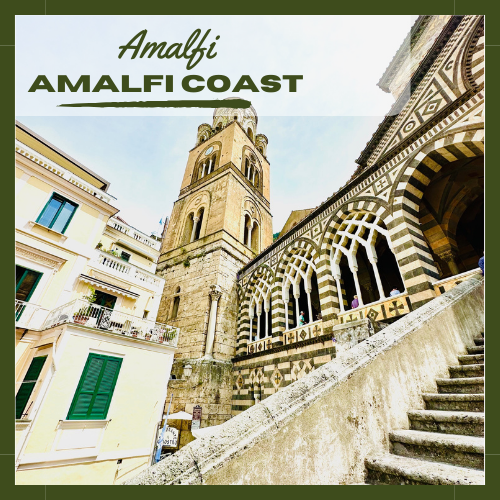
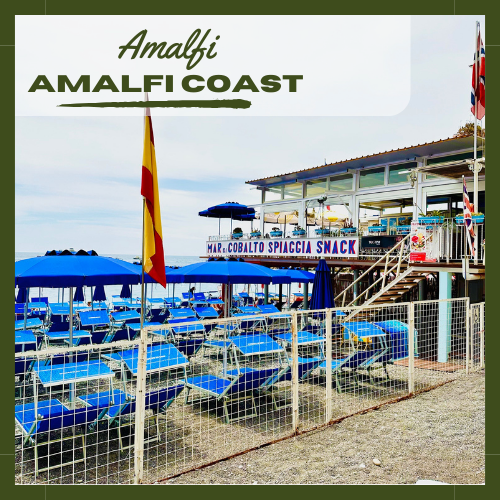
Amalfi: The town the coast is named after, explore the historic center, visit the Cathedral of St. Andrew, and enjoy the lively atmosphere of this picturesque coastal town. Or relax on the beach after a delicious meal and some ice cold gelato.
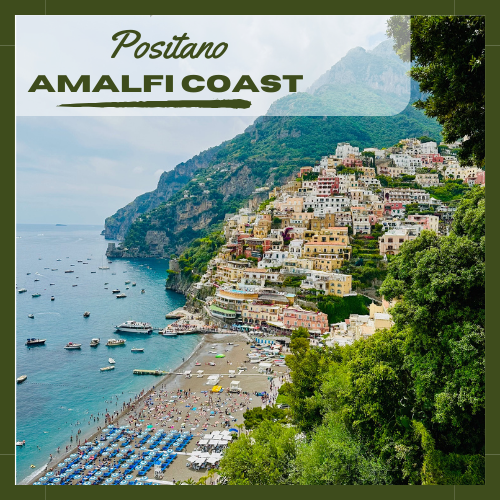
Positano: Probably the best-known town in Amalfi Coast (and also probably the most crowded). Known for its iconic colorful buildings cascading down the cliffs, Positano is one of the most iconic spots on the coast.
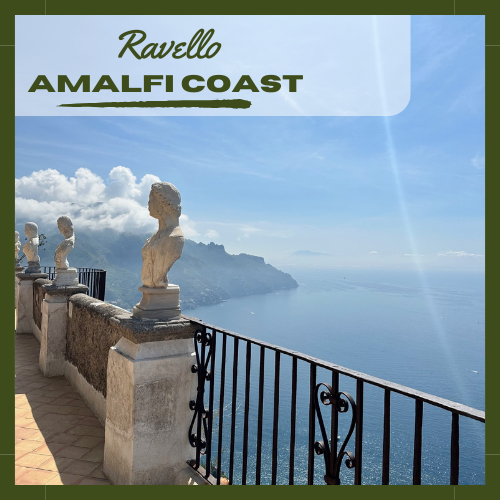
Ravello: Maybe one of the most underrated on this list, but still a popular town. Be sure to get here early and you’ll avoid the afternoon crowds at the Villas. Villa Cimbrone and Villa Rufolo have breathtaking gardens with panoramic views of the coastline.
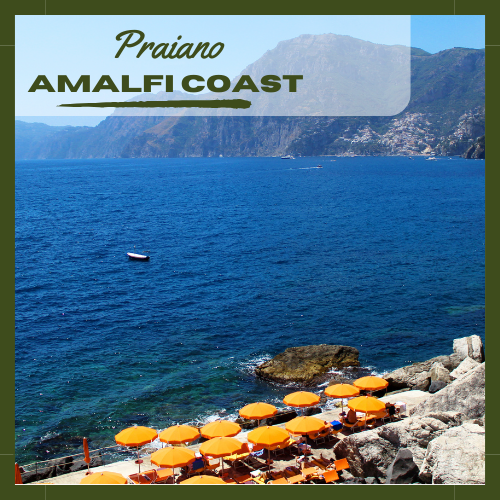
Praiano: A quieter alternative to Positano, Praiano offers lovely beaches and stunning vistas as well as plenty of eateries.
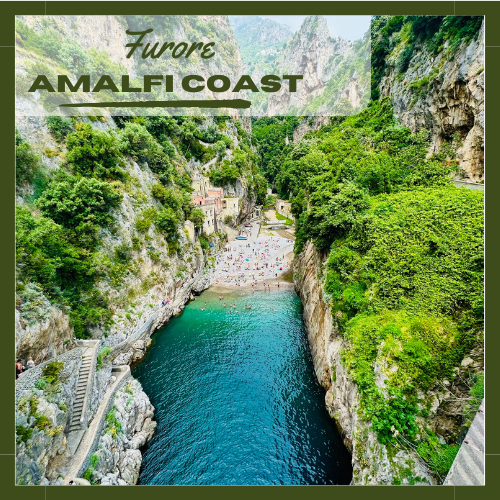
Furore: Visit the Fjord of Furore, a hidden gem with a narrow cove and crystal-clear waters. Truly a unique and must-see location while in the Amalfi Coast.
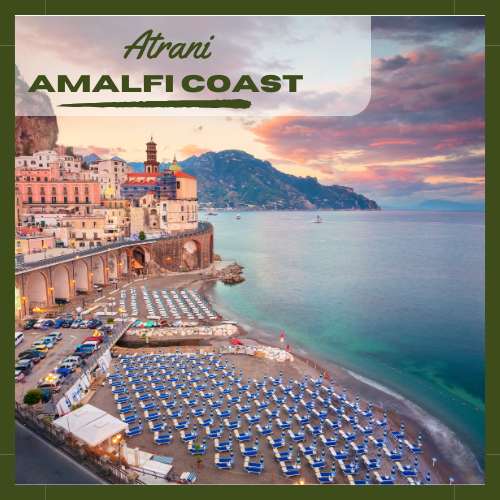
Atrani: A charming fishing village located next to Amalfi, known for its narrow streets and traditional Italian atmosphere.
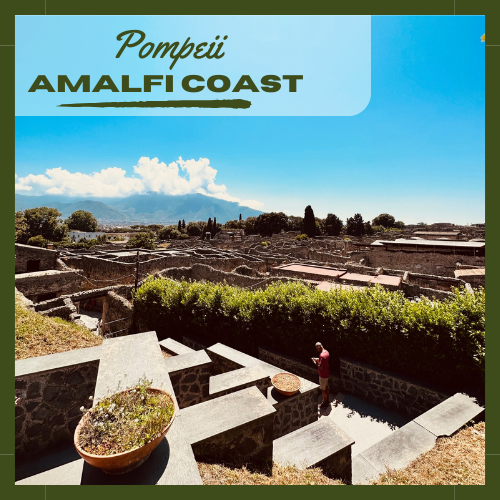
Pompeii: Explore the ancient Roman city destroyed by Mount Vesuvius in 79 AD, which is the volcano located nearby. An easy train ride from Sorrento.
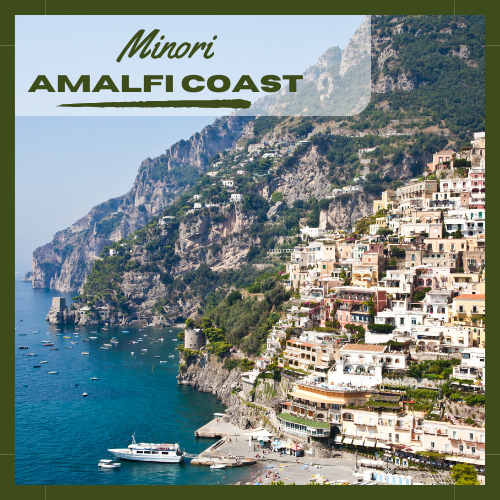
Minori: Explore the Roman Villa with its well-preserved frescoes and enjoy a leisurely stroll along the waterfront.
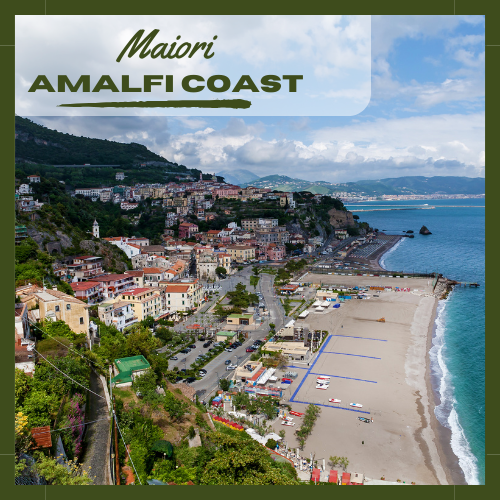
Maiori: Relax on the long sandy beach and savor some delicious Italian cuisine at local restaurants.
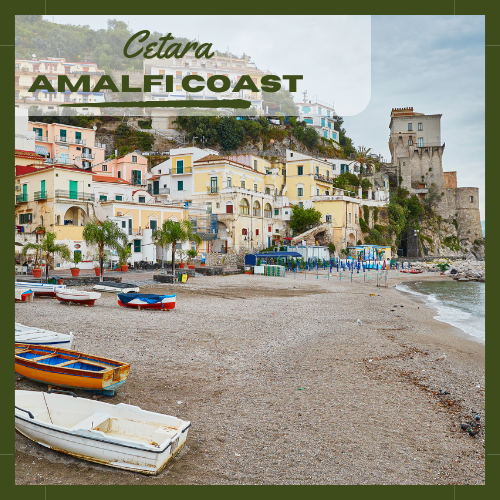
Cetara: A fishing village famous for its anchovies and picturesque harbor.
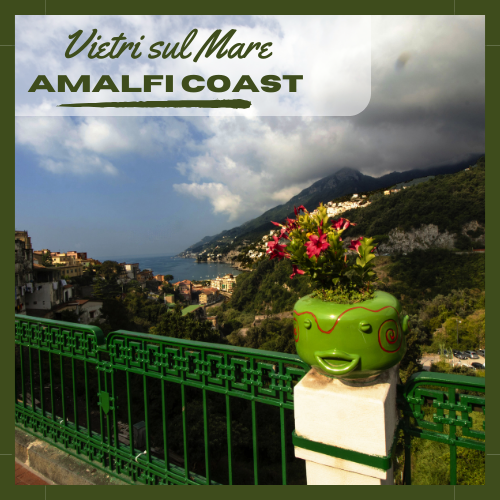
Vietri sul Mare: Known for its ceramics, this town marks the eastern end of the Amalfi Coast.
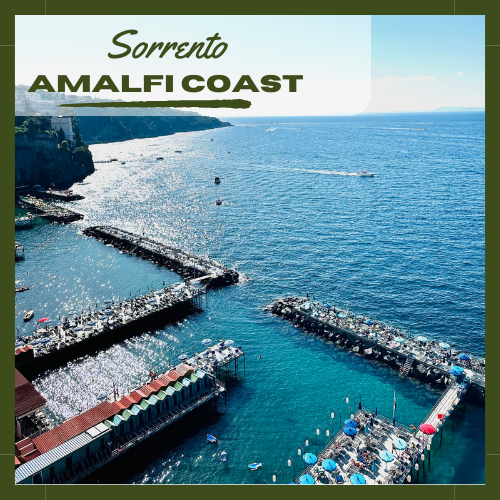
Sorrento: Although technically not on the Amalfi Coast, Sorrento serves as a gateway to the region and is worth a visit for its historic center and beautiful views. This is a larger town/city and therefore has more amenities and hotels than most of the smaller towns and has a train station and larger ferry port.
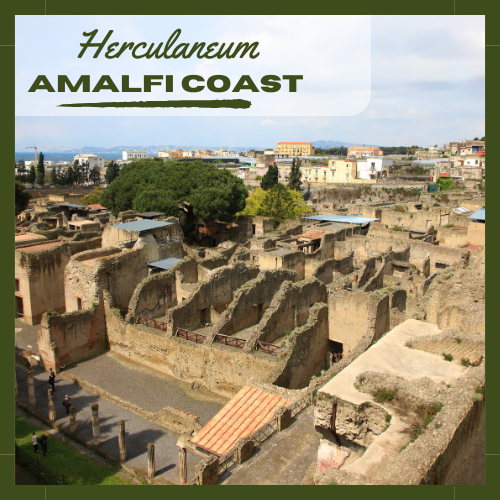
Herculaneum: Another well-preserved ancient Roman city buried by Vesuvius, which offers a more intimate look into Roman life.
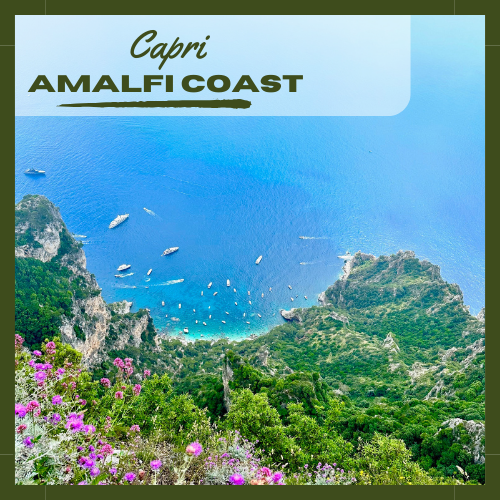
Capri: Take a boat trip (boat or ferry) to this glamorous island known for its Blue Grotto and upscale shopping. Don’t miss visiting Anacapri (easy bus ride from Capri) to ride the famous chair lift and see the views of Capri pictured above.
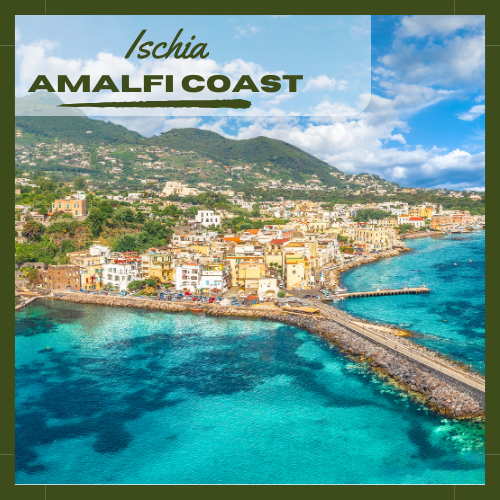
Ischia: A larger island with hot springs and beautiful beaches, perfect for relaxation.
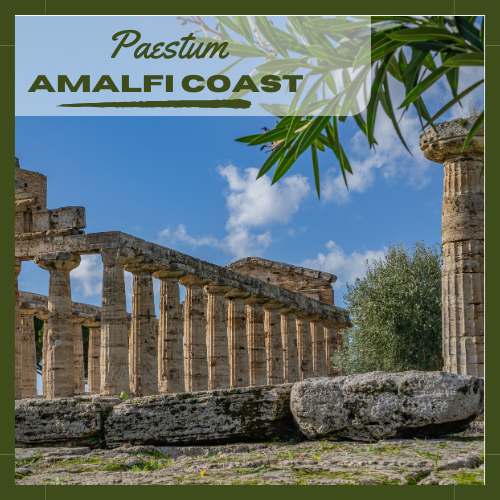
Paestum: Visit the well-preserved Greek temples in this archaeological site.
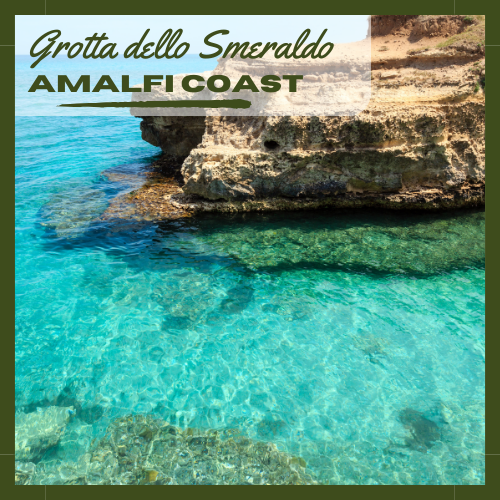
Grotta dello Smeraldo: Explore the emerald cave by boat, known for its striking green waters.
Montepertuso: A charming hillside village, Montepertuso sits right above Positano, with stunning views and a quieter atmosphere than some of the busier towns. If you’re up for it, walk approximately 1500 steps up from Positano to the beautiful views from this adorable town.
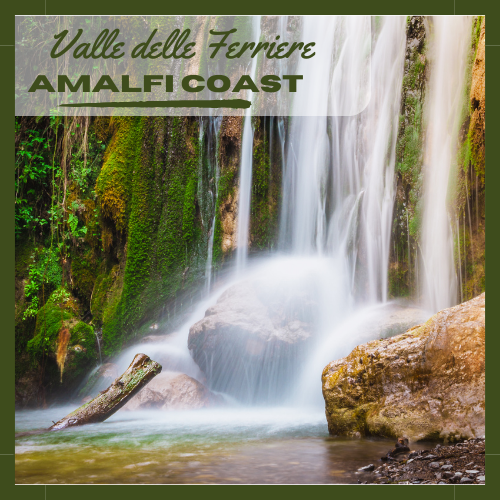
Valle delle Ferriere: Hike through this natural reserve to see waterfalls, lush vegetation, and wildlife.
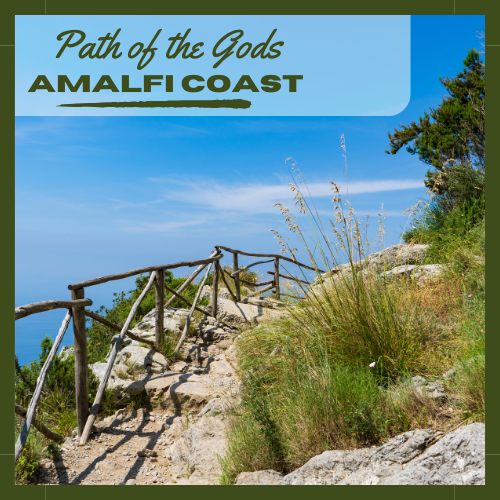
Sentiero degli Dei (The Path of the Gods): One of the most spectacular hiking paths in the world, this is a must-do if you like walking and hiking. You can pick up the path either at one of it’s starting or ending points at Pianillo Bomerano (see this Google Map Link) or Nocelle (see map link). It takes around 1.5 to 2 hours, but of course varies from person to person. It is about 5 miles long (1800 steps) and does have some rough terrain and changes in elevation (think of it like climbing a few flights of stairs).

